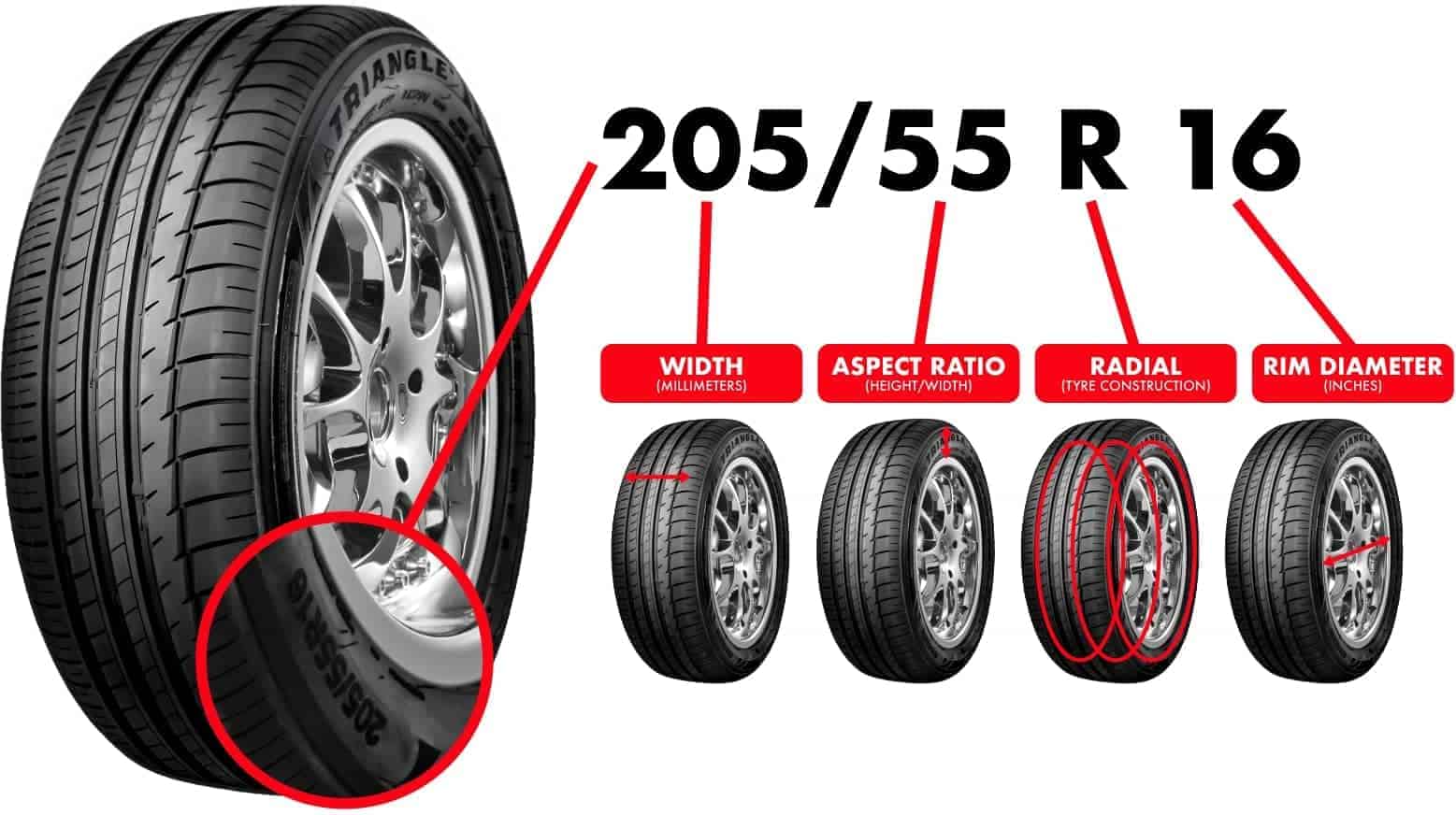Use our guide to understand where your tyre width, tyre profile, construction type, rim diameter, load index, and speed rating is located on the tyre sidewall.

Radial is a specific design of tyre where the sidewall and tread functions as two independent features. The layers run radially across the tyre. Advantages of radial tyres include flexible sidewalls, reduced fuel consumption due to less rolling resistance and a softer ride due to layout of the tyre’s plies as well as the flex in the sidewalls.
Tyre manufacturers use their own system for marking run flat tyres, resulting in different abbreviations appearing on the tyre’s sidewall, depending on the tyre brand.
Tubeless refers to ‘run flat’ tyres. Normally a car is supported by the air in the tyres where the tyre collapses when punctured. Run flat tyres have reinforced sidewalls which temporarily hold up the weight of your vehicle when getting a puncture. This allows the vehicle to drive on the flat tyre in order to get to a place of safety or your nearest fitment centre. The distance and max speed you are able to drive on a flat tubeless tyre depends on the tyre brand and tread pattern.
Use the table below to find the load and speed capacity from the markings on your tyres:
To the casual observer all tyres look alike. Don’t be fooled. Today’s tyres offer a degree of handling, ride comfort, traction, tread wear and fuel economy that far exceeds tyres manufactured just a few years ago. Below are the components of a modern tyre:
Tread
The tread is the part of the tyre that comes in contact with the road surface. The tread is made of thick rubber or rubber/composite compound with a pattern of grooves, lugs, voids and sipes. Every tyre comes with a different tread pattern, unique to that tyre.
Rain grooves
These are needed to channel water away to help prevent aquaplaning.
Lugs
Lugs are the portion of the tread that make contact with the road.
Voids
Voids are spaces between lugs that allow the lugs to flex and flush out water.
Sipes
Sipes are valleys across the whole tyre. They run perpendicular to the grooves and allow water from the grooves to escape to help prevent aquaplaning.
Wear bar
Also known as wear indicators; these raised features at the bottom of tread grooves indicate that a tyre has reached its wear limit. When the tread lugs are worn away enough that the wear bars connect it’s time to replace the tyre.
Bead
The bead connects the rim of the wheel to the tyre. It’s normally strengthened with steel wire. It’s fitted very tightly so the tyre doesn’t shift.
Sidewall
The sidewall is the part of the tyre between the bead and the tread. It is composed of rubber for the most part and strengthened with fabric or steel cords.
Shoulder
The shoulder is the edge of the tread as it begins to transition into the sidewall.
Ply
Plies are cords wrapped in rubber. These prevent the rubber from stretching. The way that plies are laid out in the tyre makes a big difference to its performance.
Get in touch with our expert sales team for professional advice and ensure that you find the right tyres for your vehicle at the right price.